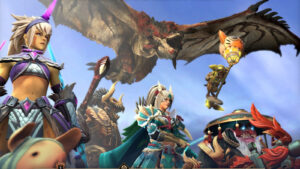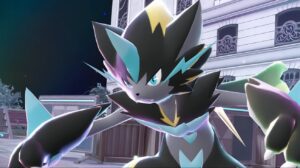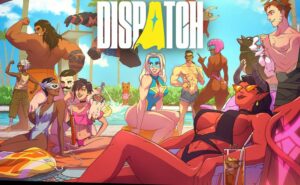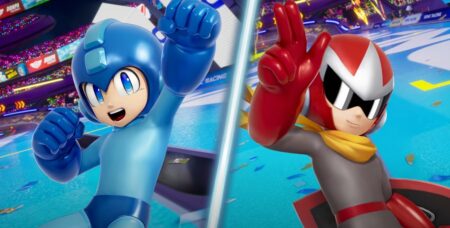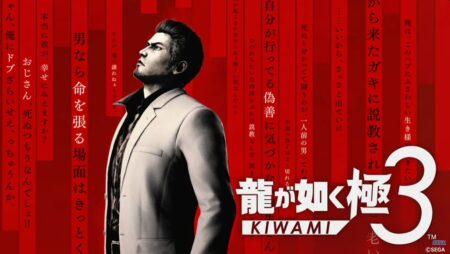Oh man, it feels weirdly at home being back in full action mode after playing Infinite Wealth, but it’s a welcome shift back. Like A Dragon Pirate Yakuza in Hawaii is a good step back to the old mechanics and somehow even made it feel fresh again considering Majima’s speed and the addition of mid-air combos which gives it a fresh coat of paint or a retouch of ink, if you will. Set sometime after the events of Infinite Wealth, Goro Majima winds up on the shores of Rich Island with no memory of who he is and how he wound up there. A young boy and his pet tiger found him and helped him get up.
Is this another crossing of fate for the one-eyed former Mad Dog? What awaits him down the road from here? It’s up to you to find out, because I am not spoiling anything.
The gameplay feels like the later Kiryu entries of the series, Kiwami 1 and 2 but a lot faster in terms of action. Majima’s previous styles have been condensed to the Mad Dog style, albeit the most dominant being the Thug style from 0 which mixes seamlessly into the original knife-heavy Mad Dog style. The Sea Dog style, on the other hand, relies on precision throwing of the sabers and careful use of the distance to deal great damage on other ranged attacks while its melee is still somewhat good but lacks the oomph of the Mad Dog style but adds a more setup-heavy (based on how I played it) method of fighting, using the return path of the sabers to deal steady damage against enemies in between you and the sabers once thrown and extending the return trip should help deal maximum damage.
The cooking minigame with the skill leveling is a nice addition, which allows you to grow and keep making better food with the ingredients you gather all over the map or grow your own ingredients with the planters all over the area or back in Rich Island, all with their own corresponding classes and fertilizers which increase the yield and net you more ingredients for the keeping whenever you cook.
From the starting simple vegetable or meat and fish meals to more complicated meals which involve eggs or other stuff and even brewing your own alcohol which provides lasting buffs to Majima’s madness meter which allows the player to do style-specific special moves such as the Mad Dog’s multiple clones which attack enemies on their own and helps when you feel the need to rush a battle or take care of a rather difficult bounty in the game to stack yourself some much-needed funding for enhancements or purchases to improve stuff in-game such as unlocking new skills customization options.
Speaking of customization options, the Street Surfer gets new ones such as new handlebars, wings, or wheels, giving the players a feel of the good ol’ wild customizations of both Japanese and American biker feels with the multiple pipes, the banners, the insane handlebars reflecting the Bousouzoku sub-culture back then, who owned motorcycles which were loud and had insane customization options, such as large fairings, wild body kits and even large side mirrors, causing mayhem and whatnots. Other options include dressing Majima up in different outfits, even some that reflect off of other Like A Dragon big names like Akiyama and even the SEGA Letter-only Kiryu Outfit set.
The seafaring parts of the game in the pirate ship are more than entertaining, it was enough to get me hooked and grinding a bit, gathering stuff out in the open sea and taking treasures to pile up even more dough and completing that list, fighting other pirate groups and working your way up brought me good amounts of challenge and fun, considering I already raided a lot early in the game and was just farming for the upgrades to make battles smoother so I can easily finish ’em as they come.
Bounty Hunting in the game is a great way to stack up money as previously mentioned but let me go on a bit of an expanded explanation here. You face enemies with varying difficulties, and the worse they are, the bigger the reward. Fighting 4-star enemies is tough early in the game but it helps that you can still outplay them by using the Mad Dog clones when things get a bit too tough to handle and attack in accordance with them to deal the most damage as the clones would keep the enemies in a stun lock or stagger ’em around and beat ’em fast enough that they won’t be able to turn the tables against you.
The soundtrack feels so tailored to Majima’s perspective that it HUGS the scene on the screen from combat to scenes in the story, from brawls with other pirates and other thugs and people on the bounty list you encounter in the game, from the small fry to the bigwigs which dish out big heaps of money. The scenes where the story progresses from calm to tense are graced by the themes given to them, with the dynamic camera movements and the feel that still captures its hard crime J-Drama trappings which make it sink in even more.
Like A Dragon Pirate Yakuza in Hawaii is an amazing back-to-old-form entry in the series with a faster fighting system that feels refreshing, especially after the RPG style you use in Ichiban’s adventures. In the immortal words of Joe Bob Briggs, “Four and a half stars! Check it out!”
Like A Dragon: Pirate Yakuza in Hawaii
Like A Dragon Pirate Yakuza in Hawaii is an excellent return to old form for long-running players and Majima fans.
The Good
- The faster fighting system feels a lot more at home playing as Majima.
- More customization options for the Street Surfer makes it much more fun.
The Bad
- Fighting four-star bounties early in the game is a bad way to make you acquainted with harder opponents.
- Dual points required for upgrades are a bit of a pain to farm, and will set you back a bit.
